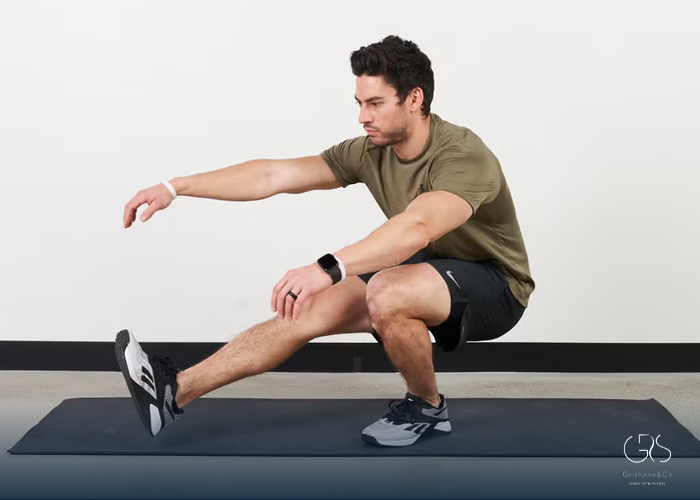It’s a common debate among fitness enthusiasts: should you start with cardio or weights? While many think it’s just personal preference, science shows that your workout order can greatly impact fat loss and muscle growth. A simple switch in your routine could unlock better results. This article explains the science behind choosing the best order for fat loss and muscle growth, how your body responds, and how to tailor your sessions to reach your fitness goals.
Understanding the Physiology of Cardio vs. Weight Training
To determine which order is optimal, it’s essential to understand how your body reacts to different types of exercise.
Cardio (aerobic exercise) primarily relies on oxygen and glycogen stores to fuel activity. It improves heart health, endurance, and helps burn calories, which is why it’s often associated with fat loss.
Weight training (anaerobic exercise), on the other hand, breaks down muscle fibers to stimulate growth and strength. It depends more heavily on glycogen, especially during high-intensity sets, and continues to burn calories even after the workout ends, thanks to excess post-exercise oxygen consumption (EPOC).

The Role of Glycogen and Energy Pathways
Glycogen is the stored form of carbohydrates in your muscles and liver, and it’s your body’s primary fuel source during workouts—particularly for strength training.
When you do cardio first, especially longer or intense sessions, you deplete your glycogen stores. That means when you start weightlifting afterward, your muscles may not have the energy they need to perform at their best, potentially limiting strength gains and impairing form.
Conversely, if you lift weights first, your body uses up glycogen stores to power your strength session, and your subsequent cardio taps into stored fat as a fuel source—particularly in moderate-intensity cardio sessions. This can result in enhanced fat oxidation.
Scientific Studies Comparing Workout Order
Several studies have examined the impact of exercise order on performance, fat metabolism, and muscular adaptations:
- A 2021 meta-analysis in Sports Medicine concluded that doing resistance training before aerobic exercise improves muscular strength and hypertrophy. When cardio is performed first, it can negatively impact subsequent strength training performance, particularly in compound lifts like squats and deadlifts.
- A study published in the Journal of Strength and Conditioning Research (2019) showed that endurance training before weightlifting significantly reduced the number of reps participants could perform and decreased total volume lifted.
- Research from the European Journal of Applied Physiology (2016) indicated that doing weights first increased post-exercise fat oxidation compared to starting with cardio. In simple terms, lifting before cardio may be more effective for fat loss.
The takeaway? The best workout order for fat loss and muscle gain appears to be weights first, then cardio.
The ideal sequence depends
Fat loss and muscle growth: what’s your priority?
on what you value most—fat loss, muscle gain, or endurance.
1. Prioritizing Fat Loss
If your primary goal is to shed fat, especially from stubborn areas like the belly, starting with weights is generally more effective. Here’s why:
- Lifting depletes glycogen stores.
- Post-lifting, moderate cardio taps into fat stores more efficiently.
- Weight training increases EPOC, which boosts fat burning for hours post-workout.
💡 Tip: After strength training, 20–30 minutes of steady-state cardio (like incline walking or cycling) is ideal for maximizing fat oxidation.
2. Prioritizing Muscle Gain
If your focus is on building strength and muscle:
- Your body needs optimal glycogen to push heavy weights and execute high-volume sets.
- Fatigue from cardio could reduce your strength output.
- You’ll see better hypertrophy (muscle growth) results by lifting with full energy.
💡 Tip: Save cardio for separate sessions or do light cardio post-lift if needed for recovery and cardiovascular health.
3. Prioritizing Endurance or Training for a Race
If you’re training for a marathon or triathlon, it makes sense to lead with cardio.
- This ensures your legs and cardiovascular system are fresh.
- Strength training can follow, with lighter loads and fewer reps to avoid injury.
💡 Tip: In this case, strength training should support your endurance goals—not hinder them.
Hormonal Response and Fat-Burning Potential
One of the lesser-known but important aspects of workout order is the hormonal environment.
- Weight training spikes testosterone and growth hormone levels, both of which are essential for building muscle and mobilizing fat.
- Cardio, especially long sessions, can elevate cortisol—a stress hormone linked to fat storage (particularly around the abdomen).
Starting with weights creates a more anabolic (muscle-building) environment, while ending with moderate cardio enhances lipolysis (fat breakdown). This combination supports the best workout order for fat loss and muscle gain.
Training Splits and Weekly Structure
To avoid fatigue and optimize performance, you can also structure your week strategically:
- Day 1: Upper-body strength + moderate cardio
- Day 2: Lower-body strength + HIIT
- Day 3: Active recovery (yoga, walking)
- Day 4: Full-body strength + steady-state cardio
- Day 5: Cardio-focused session (intervals or long run)
- Day 6: Light weights + core
- Day 7: Rest or mobility work
This approach allows for intensity variation and ensures recovery between muscle groups.
What About Fasted Cardio?
Fasted cardio has gained popularity, especially among those aiming for quick fat loss.
- While studies show it can lead to slightly higher fat oxidation during the session, the difference in long-term fat loss is minimal when compared to fed cardio.
- However, doing weights in a fasted state can impair performance and muscle protein synthesis.
If fat loss is your goal, weights first (fed), followed by cardio (fasted or fed) remains the more effective and sustainable route.
(I recommend that you read about cardio workout routines.)

Common Myths About Workout Order
❌ Myth 1: Cardio burns more fat than weights
Truth: Weights increase metabolism for longer periods due to EPOC and muscle-building, which boosts your resting metabolic rate.
❌ Myth 2: You can’t lose fat and gain muscle at the same time
Truth: With a proper balance of strength training, cardio, and nutrition, body recomposition is possible—especially for beginners or those returning after a break.
❌ Myth 3: You’ll bulk up if you lift first
Truth: Muscle gain doesn’t happen overnight. Strategic lifting combined with moderate cardio is ideal for a lean, toned look.
Nutritional Support for Maximum Results
Even the best workout order won’t deliver optimal results without proper nutrition.
- Protein intake (1.6–2.2g per kg of body weight) supports muscle repair and growth.
- Carbohydrates before lifting help maintain glycogen stores.
- Post-workout nutrition should include both protein and carbs to replenish energy and kickstart recovery.
Hydration, sleep, and stress management also play critical roles in how your body responds to your workout sequence.
Real-World Example: Fat Loss-Focused Routine
Let’s imagine Sarah, a 34-year-old woman aiming to lose fat and tone her body.
Her gym plan:
- Warm-up: 5 minutes dynamic stretching
- Strength: 40 minutes of compound lifts (squats, rows, push-ups, deadlifts)
- Cardio: 25 minutes incline treadmill walking or stair climber
- Cool down: Stretch + foam roll
She eats a balanced meal 1–2 hours before, hydrates during, and has a protein shake after.
After 8 weeks, she sees:
- Improved muscle tone
- 4% body fat reduction
- Better strength and posture
Her results aren’t from magic—they come from the best workout order for fat loss and muscle gain, combined with consistency and smart recovery.
Conclusion: The Right Order Can Transform Your Results
The verdict is clear: if you want to maximize fat loss and muscle growth, starting with weights and finishing with cardio is your best bet. This sequence works with your body’s hormonal and metabolic responses, boosting strength and enhancing fat burning.
Still, your fitness level, goals, and personal preferences play a big role. What matters most is choosing a routine you can follow consistently for real fat loss and muscle growth.
Next time you hit the gym, remember—your workout order could be the key to better results.
Sources
- MDPI, Concurrent Training Programming: The Acute Effects of Sprint Interval Exercise on the Subsequent Strength Training
- National Library of Medicine, Specific Training Effects of Concurrent Aerobic and Strength Exercises Depend on Recovery Duration
- ResearchGate, Concurrent Training: A Meta-Analysis Examining Interference of Aerobic and Resistance Exercises










